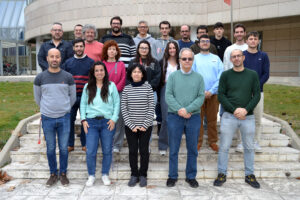The aim of our research group is to study at the nanoscale the structure of low dimensional systems and to develop new methodologies to induce highly-controlled chemical reactions on surfaces. We target on new nano-architectures of reduced dimensionality by using organic molecules as building blocks and bottom-up strategies. We link the atomic structure of the on-surface synthesized nano-architectures and 2D layers with its electronic properties by using a combination of different experimental surface science techniques (STM, LEED, IRS, XPS synchrotron radiation..) and theoretical methods.
The motivation of our objectives is the need of acquiring valid and robust methodologies for a rational assembling of molecular objects at the nanoscale. Innovative strategies, involving a precise control of molecular structures on well-defined surfaces, are crucial to technologically exploit the concept of rational bottom-up design and assembly. By achieving further understanding at an atomic level of the interplay between molecule-molecule and molecule-substrate interactions, we will contribute to establish the bottom-up approach as a suitable methodology to develop nanotechnology.
Research lines
– On-surface synthesis. We search for new strategies to interlink molecular bulding-blocks on different surfaces by tuning up the adsorbate-substrate interaction.
– Low dimensional materials. We aim at looking for new reduced dimensionality structures with upstanding electronic properties. Graphene, transition metal dichalcogenides, polymeric chains or networks, carbonaceous 2D membranes…
– Atomic-scale photophysics. We try to understand photophysical and photochemical phenomena at the nanoscale by studying the energy conversion mechanism between charges and photons on the single molecule level.
– Advanced nanoparticles. We generate nanoparticles by a gas-phase aggregation by means of multiple ion cluster source, for the generation of complex, ultra-pure nanoparticles made of different materials.
– Laboratory astrochemistry. In collaboration with astronomers, we try to mimic processes that takes place in red-giant stars, supernovae or nebulae, using UHV technologies and surface science characterization techniques.
The research activities compiled in this webpage are founded throughout:



